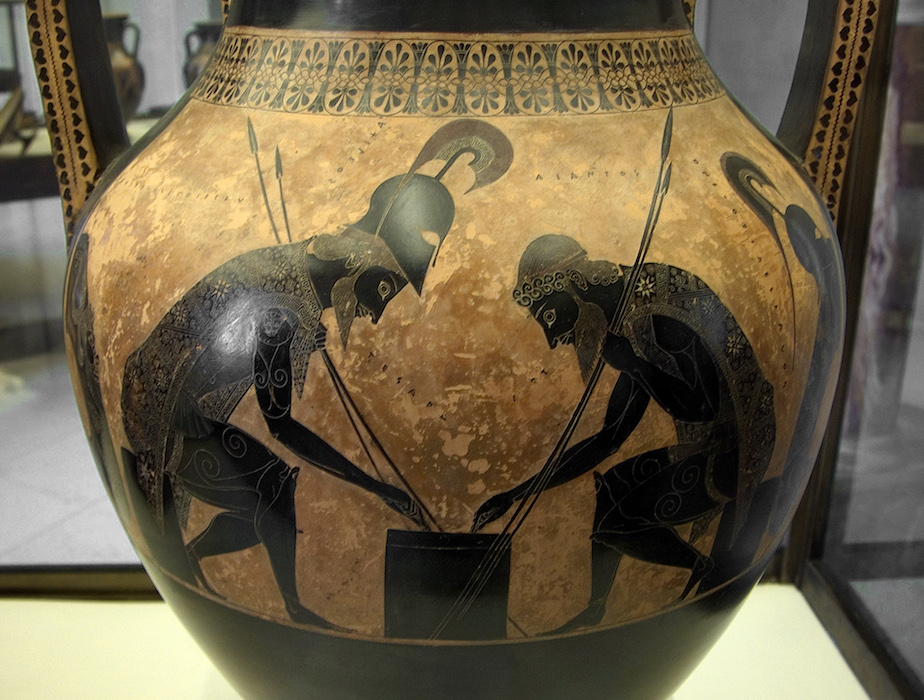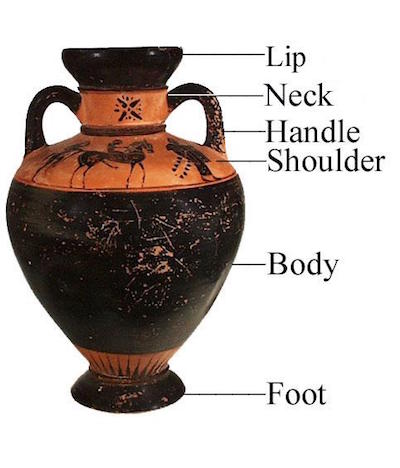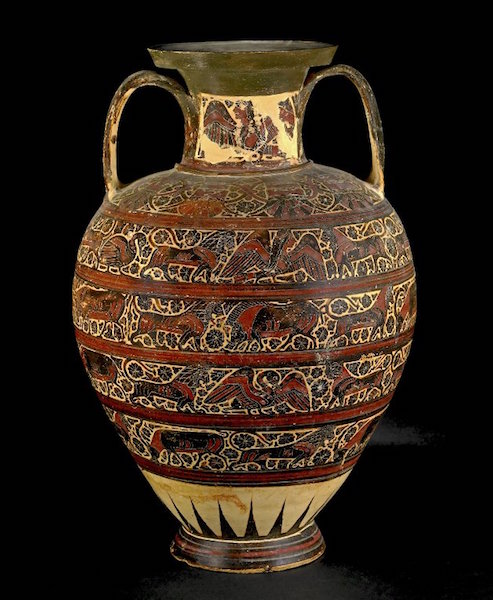Ancient Greek pottery is a major part of the archaeological legacy of ancient Greece and has had a great impact on our knowledge of Greek civilization. The earliest Greek pottery dates back to the Stone Age, and its production and decoration have evolved over the centuries. Greek pottery can be divided into four major categories: storage vessels, mixing vessels, and vessels for oils and perfumes. During the 8th century BC, there was a global market for ancient Greek vases, which Corinth and Athens controlled until the end of the 4th century BC.
The Emergence of Vase Painting
With the emergence of vase painting, there was an increase in embellishment in Greek pottery art. Geometry-based artwork in Greek vase patterns appeared at the same time as the Orientalizing period in the late Dark Age era. This period was led primarily by ancient Corinth, in which the prior stick-figures of geometric pottery became hashed out amid patterns that supplanted the geometric shapes. From the 8th century BC to the late 5th century BC, the Orientalizing era was led primarily by ancient Corinth, in which the prior stick-figures of geometric pottery became hashed out amid patterns that supplanted the geometric shapes.
The Rebirth of Greek Art
The rebirth of interest in Greek art began during the Renaissance, and the link between Attic vases and those found in central Italy was made much later. Otto Jahn established the norm for thorough study and analysis of Greek pottery art, meticulously noting the forms and inscriptions. In the 19th century, archaeology was used to uncover the chronology of Greek pottery and establish first principles. In the 20th century, efforts were made to document and publish the entirety of public vases.Types and Uses of Greek Pottery
Various types and forms of ancient Greek vases were used for different purposes, such as grave markers, tomb gifts, and objets d’art. Some vases were linked with rituals, while others were associated with athletics and the arena. From the late seventh century until around 300 BC, figure-led paintings were at their pinnacle in terms of output and quality and were extensively exported. During the Greek Dark Age, from the 11th to 8th century BC, protogeometric art was the dominating early form, using circular and wavy ornamental motifs.
The Geometric Period
From the 8th century BC to the late 5th century BC, the Geometric period in Greek art (900-700 BC) was characterized by a fear of emptiness, with most figures portrayed geometrically. Human figures began to appear in the mid-century, with the best-known examples being those found on vases at Dipylon. At the conclusion of the period, depictions of mythology occur, most likely when Homer formalizes the Trojan cycle legends in the Iliad and Odyssey.
The Orientalizing Style
The Orientalizing style arose as a result of cultural turbulence in the 8th and 7th centuries BC in the Eastern Mediterranean and the Aegean. The new idiom emerged first in Corinth and then in Athens, and was distinguished by a wider vocabulary of motifs. Geometrical aspects persisted in the proto-Corinthian style, which accepted these Orientalizing efforts while coexisting with a conservative sub-geometric. The Analatos Painter and the Polyphemos Painter are two Attican Orientalizing Painters. Crete and the Cyclades islands are noted for their fondness for “plastic” vases, i.e., those with a paunch or collar shaped in the shape of an animal or a man’s head. Protocorinthian skyphos with winged genius and animals is located in the Louvre Museum in Paris, France. The Wild Goat Style is traditionally assigned to Rhodes as a result of an important find within the Kameiros necropolis, but is found across Asia Minor, with manufacturing concentrations in Miletus and Chios. Black-figure technique was invented in the 7th century by the Corinthian city-states and expanded from there to other city-states and places such as Boe.
Conclusion
Ancient Greek pottery is an important source of information about the culture and history of Ancient Greece. Its production and decoration have evolved over the centuries, and it has had a great impact on our knowledge of Greek civilization. From the Stone Age to the Renaissance, Greek pottery has been an integral part of the Greek culture and history. #AncientGreekPottery #GreekArt #GreekVases #GreekPottery #GreekCultureWhether you're looking for a specific style of painting or just browsing, wallart.love offers a wide variety of art pieces at great prices.
Don't stop at just this article, check out these other gems too:
- The Timeless Art of Ceramic Work
- Exploring the Art and Architecture of Ancient Greece
- Exploring the Art of the Hellenistic Era
- Japanese Jomon Pottery: An Overview of Ancient Japanese Art
- Kintsugi: An Ancient Japanese Art of Repairing Broken Pottery with Gold
- Everything You Need to Know About Working with Ceramics and Pottery
- Auguste Rodin: The Father of Modern Sculpture
- What is Retrofuturism?
- Comparing Acrylic and Oil Paints: Which is Best for Your Art Project?
- The Young Hare by Albrecht Dürer: A Detailed Portrayal of a Rabbit
























